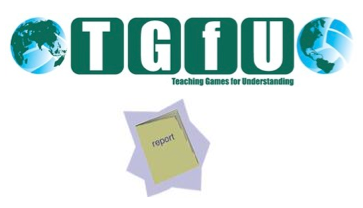Developing pupils’ performance
Gray, S., & Sproule, J. (2011). Developing pupils’ performance in team invasion games, Physical Education and Sport Pedagogy, 16(1), pp. 15-32Gray & Sproule’s (2011) article ‘Developing pupils’ performance in team invasion games’ reports on a comparative study conducted into the effects a tactical approach to teaching basketball had on pupils’ game knowledge, playing performance and perceptions of decision making ability as compared to pupils taught with a more ‘authentic’ traditional approach. The article follows on from previous research conducted by the authors concerning the delivery of secondary physical education within the Scottish curriculum (see Gray, Sproule, & Morgan, 2009).
Data gathered from two separate teacher interventions were compared and included: a) the identification of pupils’ key experiences of learning through post-intervention focus group interviews, b) videos of pre and post-intervention game play performance, and c) a modified questionnaire (derived from the Tactical Skills Inventory for Sport) administered pre and post-intervention to establish pupils’ perceptions of their own decision making abilities. Data were analysed by: a) two experienced PE teachers identifying key experiences discussed by students during focus groups, b) a modified coding procedure designed to evaluate pupils’ game performance, and c) a two way repeated measures ANOVA to establish differences between groups’ perceptions of decision making ability reported within questionnaire answers. Although situated in only one setting and focusing on only one invasion game findings reported in this article can be used to further understanding of existing comparative research into tactical vs technical approaches to games learning (see Griffin, Oslin & Mitchell, 1995; Harrison et.al., 2004). The results indicated: 1) pupils taught using the traditional approach generally discussed technical components of skill execution as opposed to the pupils taught using the tactical approach who discussed different principles of play, 2) pupils taught using the tactical approach made significantly more and better on and off-the-ball decisions, and 3) pupils taught using the tactical approach perceived their decision making had improved whereas the pupils taught using the traditional approach perceived their decision making skills had deteriorated. No significant post-intervention difference was found between groups with regards to on-the-ball skill execution. The need for the intervening teacher to be guided by an experienced tactical approach practitioner through the planning stages of each lesson was briefly discussed in the ‘Method’ section. Such discussion highlights further need for a robust verification process to be articulated within such articles to help quality assure the use of selected tactical approach to teaching. Limitations associated with research design were also discussed within the article. Although absent from discussion was the suggestion of utilizing a practice referenced approach (see Kirk, 2005) which could arguably be considered a more appropriate research design in order to address the stated intervention aim of developing pupils’ ability to create space for themselves and/or the ball carrier in order to move towards the target and score. ReferencesGray, S., Sproule, J. & Morgan, K. (2009). Teaching team invasion games and motivational climate. European Physical Education Review, 15(1), pp. 65-89.
Griffin, L., Oslin, J. & Mitchell, S. (1995). An analysis of two instructional approaches to teaching net games. Research Quarterly for Exercise and Sport, 66 (Suppl.), pp. 65-66. Harrison, J., Blakemore, C., Richards, R., Oliver, J., Wilkinson, C. & Fellingham, G. (2004). The effects of two instructional models--tactical and skill teaching--on skill development and game play, knowledge, self-efficacy, and student perceptions in volleyball. Physical Educator. 61(4), pp. 186-199. Kirk, D. (2005). Future prospects for teaching games for understanding. In Teaching games for understanding. Theory, research and practice, ed. J.I. Butler and L.L. Griffin, pp. 213–27. Champaign, IL: Human Kinetics. Review Completed by Kendall Jarrett, Senior Lecturer in Physical Education, Leeds Metropolitan University, UK |



